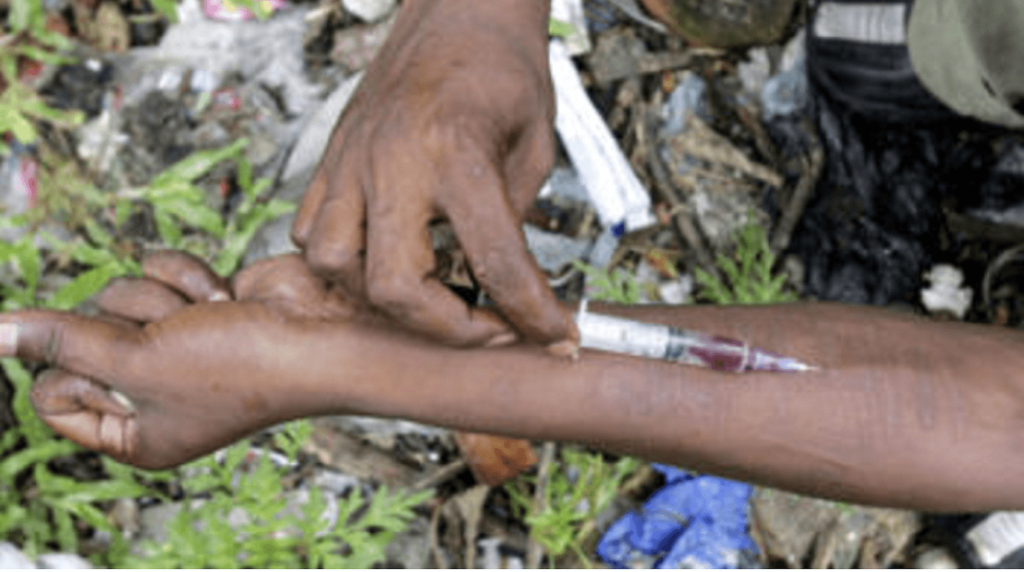Maharashtra accounts for 40% of the suicides because of Drug abuse

[orc]The data from the NCRB reports indicates that close to 23000 people have committed suicide because of drug abuse/addiction between 2010 and 2015. Close to 40% of these suicides were committed in Maharashtra.
The National Crime Records Bureau has been publishing an annual report on the Accidental Deaths and Suicides in India (ADSI) in India since 1967. All these reports can be accessed online. As the title suggests, this report covers various causes for accidental deaths as well as suicides, and categorizes these instances by cause, profession, educational background, and caste et al. In the six year period between 2010 and 2015, a total of 22917 people committed suicide because of drug abuse/addiction. In this article, We look at the state-wise break up of suicide motivated by Drug Abuse/Addiction for the past 6 years. We also analyse trends that seem to be emerging in the reports, in terms of states with highest cases of suicide.
Most suicides in Maharashtra
The number of suicides because of drug abuse/addiction has been more than 3000 in each of the 6 years from 2010 to 2015. Close to 40% of these suicides in these five years were committed in Maharashtra.
Within the states, it is observed that
- The number of cases of suicide in Maharashtra seems to be disproportionately greater than the number of suicides recorded in any other state (usually 3 times greater than the second highest state)
- The number of cases of suicide in Tamil Nadu and Kerala seem to be increasing in number and has nearly doubled in the last 6 years.
- The number of cases of suicides in Madhya Pradesh seems to have steadily increased between 2010 and 2013, but in 2014, the number of deaths seem to have reduced by over 50% only to increase again by over 80% in 2015.
- Maharashtra, Tamil Nadu and Kerala border international waters, which could be a potential source of drugs entering the nation.
| Year | 1 | 2 | 3 | 4 | 5 |
|---|---|---|---|---|---|
| 2015 | Maharashtra – 1271 | Madhya Pradesh – 561 | Tamil Nadu – 422 | Kerala – 418 | Andhra Pradesh – 162 |
| 2014 | Maharashtra – 1372 | Tamil Nadu – 552 | Kerala – 475 | Madhya Pradesh – 305 | Telangana – 119 |
| 2013 | Maharashtra – 1794 | Madhya Pradesh – 628 | Tamil Nadu – 437 | Kerala – 400 | Andhra Pradesh – 282 |
| 2012 | Maharashtra – 1689 | Madhya Pradesh – 581 | Kerala – 275 | Tamil Nadu – 242 | Chhattisgarh – 240 |
| 2011 | Maharashtra – 1417 | Madhya Pradesh – 528 | Chhattisgarh – 265 | Tamil Nadu – 258 | Kerala – 235 |
| 2010 | Maharashtra – 1400 | Madhya Pradesh – 476 | Kerala – 289 | Tamil Nadu – 204 | Chhattisgarh – 203 |
However, it is important to keep in mind that these numbers do not consider the massive disparity that exists between states in terms of population size. Thus to understand this information better, we have scaled the number of deaths per 1 million people in each state for 2015.
When scaled to number of deaths per 1 million people, the top 5 States out of the states with at least 20 such suicides ,remain the same, with their order changed. Kerala for instance with 12.5 such deaths per million population 2015 tops the list followed by Maharashtra & Madhya Pradesh in that order. Since the tables on the ADSI simply show the number of cases, they can be misleading and shadow states that seem to have a problem of high suicide rates for drug addiction/abuse.
About 20% of all the suicides in the 53 mega cities
The ADSI report mentions the city-wise distribution of these cases and mentions the 53 mega cities (cities with more than a million population as per 2011 census). The numbers makes it quite clear that the number of cases outside these 53 mega cities is between 4 to 5 times the number of cases in the 53 mega cities. However, the divide seems to be decreasing and the percentage of cases in the 53 cities has gone up by 9 percentage points in the last 6 years. This also debunks the theory that drug abuse is largely an urban problem.
| Year | Total Cases | Suicides in 53 Mega Cities | Suicides in other places |
|---|---|---|---|
| 2015 | 3670 | 819 (22.3%) | 2851 (77.7%) |
| 2014 | 3647 | 788 (21.6%) | 2859 (78.4%) |
| 2013 | 4591 | 796 (17.3%) | 3795 (82.7%) |
| 2012 | 4008 | 676 (16.8%) | 3332 (83.2%) |
| 2011 | 3658 | 690 (18.9%) | 2968 (81.1%) |
| 2010 | 3343 | 444 (13.3%) | 2899 (86.7%) |
Suicide cases decreased by 20% in 2014
The 2014 ADSI shows a decrease of over 20% from 2013 in terms of total cases reported. The number for 2015 is more or less the same as 2014. This is a positive sign though there are multiple steps that need to be undertaken towards preventing people from committing suicide over drug abuse/addiction. These steps include setting up rehabilitation and counselling centres in all states to help people who suffer from addiction. Drug addiction and abuse are problems that have devastating effects in people and their families, granular information from the ADSI report ( up to the level of district) should be utilized for better planning in curbing this problem.